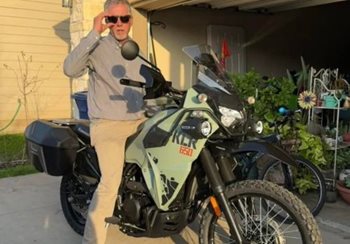
This weekend, I took a course to obtain my Texas motorcycle endorsement. It was a nice, refresher driving course focused on highway safety. One of the main tenets of safety that was repeated often this weekend, was to assume that no one sees you. This is a good safety practice to have no matter what you are driving, or riding, or even if you’re a pedestrian.
The other safety measure that was mentioned often, was making sure that there was always an escape route to maneuver into, should things go wrong. Once again, this is a good habit to have no matter what you are driving or riding.
After watching the videos for my driving course, I drove toward Dallas, TX. The two safety practices mentioned in the videos were not being utilized by many of the motorists, as I encountered heavy Interstate 35 traffic through Dallas. In fact, the way everyone was driving reminded me of my days racing a stock car on the track. There was not much space being given for error by many of the motorists as I traveled down the highway.
When everyone is running super close to each other and at a high rate of speed, there’s not much room for error, nor is there an escape route of any kind. Incidentally, this is why I like either being in the far right lane, or the far left lane if I’m passing, and not in any of the center lanes. In the center lanes in heavy traffic, people are darting trying to advance their position as if it was their last lap of the Daytona 500. There are likely no escape routes to put your vehicle in. Most of the time, the right lane (which is where a vehicle should be unless they are passing to begin with) offers a shoulder that can be used to miss the chaos that can be caused when all goes wrong in a high-density traffic situation.
The safety techniques are surprisingly the same for a motorcycle, car, or a large commercial vehicle. This led me to think about a conversation that I had with another driver about the collision mitigation system. He was complaining about how the system was braking for a situation that, in his opinion, was unnecessary. Here’s the situation he was talking about: A car pulled out in front of him. He knew that the car was going to accelerate and thought to himself, “Why would they want the truck to slow down and lose all my momentum?”. I said to him, “Yes, as truck drivers, the more miles we drive, the more we think that we can predict what the vehicle ahead of us is going to do.” What makes this false sense of security even more of a problem, is the fact that we are nearly always right with our predictions. I said to the driver, “In this case, what would have happened if the car did not accelerate as you had expected? What if their engine had stalled? What if they hit the brakes instead of the gas?”. That’s when I shared with him that the collision mitigation system made the right maneuver because it sees things going wrong, not right.
A case and point on our false sense of security happened to me many years ago. In this scenario, I had just picked up a load of stainless steel tubing. As I progressed up the road, a car pulled out right in front of me by a funeral home. I had to brake to not run into this automobile, even though I knew they were going to accelerate. But the car that had just pulled out in front of me did not accelerate. Instead, it stopped to turn into the other entrance of the funeral home parking lot. I had to apply my foundation brakes as hard as I could to avoid crashing into it. This caused my load to telescope slightly and damaged the headboard on my trailer.
Our exit strategy here is to always be looking and planning for an escape route. Drive in a way in which we expect everyone to do the wrong thing, instead of the right thing. By doing this, you will find that there is a need for a larger distance between you, and the vehicle ahead of you, to maneuver safely through any disharmony in traffic.